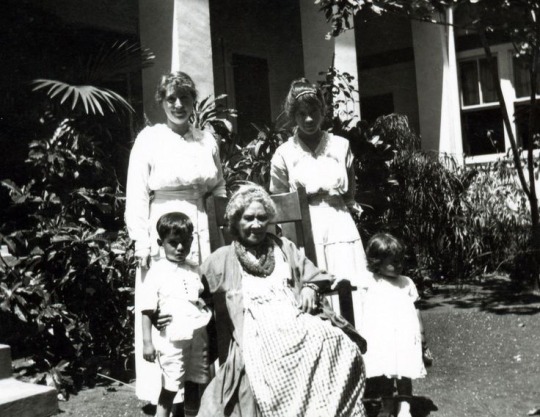#liliuokalani
Photo

“i find the last queen of hawaii incredibly inspirational. She shows that culture and history and civilization is not carried in boundaries and laws, but ultimately in our veins, our hearts, and our lives. ❤️” - Submitted by Anonymous
28 notes
·
View notes
Photo
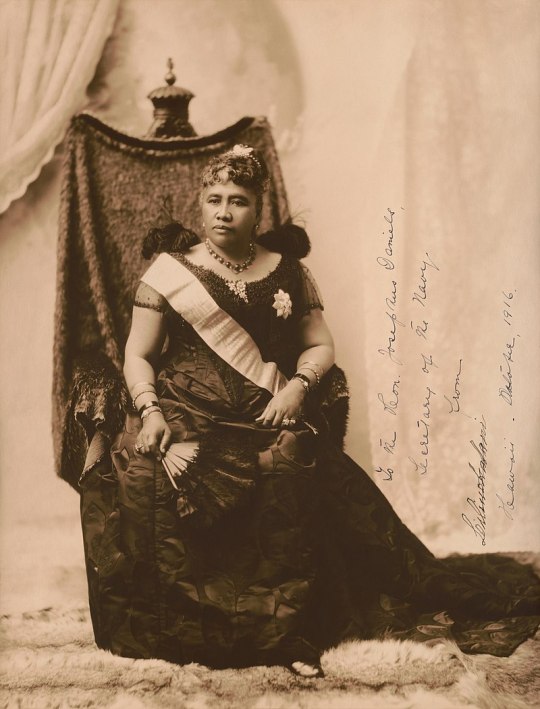
Queen Lydia Lili’uokalani (Kaʻiulani's aunt)
Kaʻiulani's aunt was the last reigning monarch of Hawaii. Queen Lydia Liliʻu Loloku Walania Kamakaʻeha ruled from January 29, 1891, until the overthrow of the Hawaiian Kingdom by a coalition of American businessmen, led by Sanford Dole, on January 17, 1893. The composer of "Aloha ʻOe" and numerous other works, she wrote her autobiography Hawaiʻi's Story by Hawaiʻi's Queen during her imprisonment following the coup.
112 notes
·
View notes
Text
WHAT WILL YOU DO?

3 notes
·
View notes
Text
June 1900 Hawaii becomes a territory
Dole, Cleveland and Hawaii
On July 6, 1898 the Republic of Hawaii was annexed to the U.S. after Congress passed the Newlands Resolution, the culmination of nearly thirty years effort to bridge the two.
The Sugar Fix
Hawaii’s importance increased with the aftermath of the Civil War and the concurrent rise in sugar prices. In the United States sugar had always been supplied by the southern…

View On WordPress
#Great American Eclipse#Hawaii Annexation#June Event#Queen Liliuokalani#Reciporcity Treaty Of 1876#Sanford Dole#Search For Sugar
0 notes
Note
☎️
You In Billy's Phone? :: Accepting

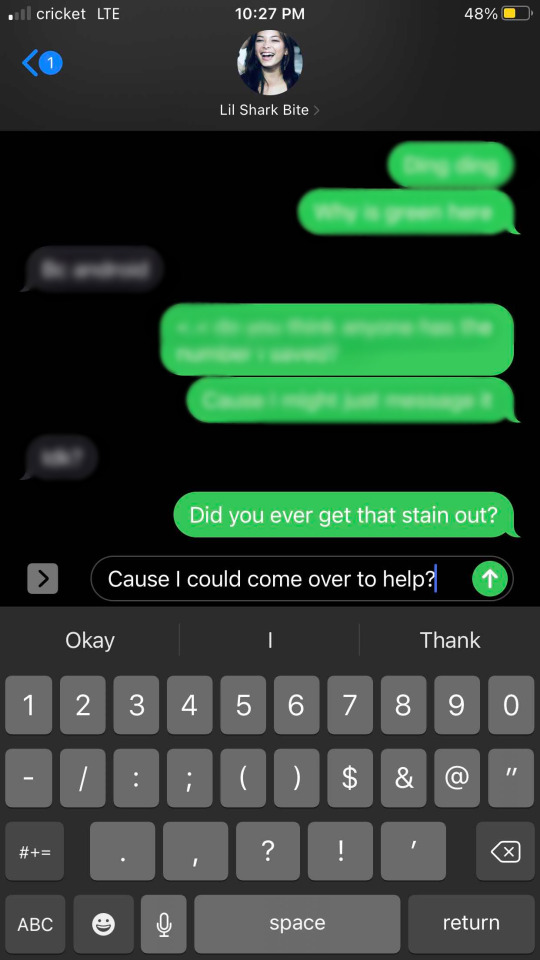
#::: { asks } so does this mean ann margret's not coming?#Her ringtone: Aloha 'Oe - Queen Liliuokalani#brooklynislandgirl#::: { VERSES } As Deep As The Bluest Sea
1 note
·
View note
Text
I want to talk a little bit about Hawai‘i, because I have been thinking a lot about my people, and our lives.
The year 2023 marks 130 years since the illegal overthrow of the Hawaiian Kingdom.
On January 17th 1893, American businessman used their connections and military influence to dethrone Queen Liliuokalani by threat of force.
This annexation still impacts my people 130 years later. It still hurts us, it still haunts us,
For the last 130 years my people have suffered under America’s cruelty and indifference.
Unsustainable Tourism haunts us, causing a cost of living crisis, which turns into a rise in poverty, which turns into a rise in individuals experiencing homelessness. This cost crisis disproportionately effects my people, Kānaka Maoli. We cannot even afford to live on our on land. Our ancestral home.
And in turn, tourism then provides the most jobs. This industry pushes us off our land and into poverty, and then it turns around and sells us back our culture as a walking joke.
Our very identity is turned into entertainment. Our very culture is turned into entertainment.
And many of my people have no choice but to sell their culture so they can eat, so they can survive.
We have been put in a never ending cycle of misery and cultural destruction.
In addition, Military Involvement on our islands causes repeated incidents of ecological violence, and land disputes. The military take claim to land that belongs to my people, and they spill chemicals over and over, and poison the water we drink.
My people are suffering. Our culture is suffering.
And everyday more tourists come. Everyday more land is taken to build hotels. Everyday more culture is stripped and bastardized. Everyday more land is taken for military use.
I’m so tired of living this way. I’m so tired of waking up and watching the slow and agonizing death of my people.
I want us to live. I want us to thrive.
I want my people to survive.
I want to survive.
So please read up on the current issues that face Kānaka Maoli. Please educate yourself on my people’s history and current affairs.
Speak up and speak out. Talk about unsustainable tourism, and speak up about how harmful a “vacation” to Hawai‘i can be. Talk about the overthrow of the Hawaiian Kingdom, and it’s injustice.
Hawai‘i is Hawaiians. Hawai‘i is our history. Hawai‘i is our home. Hawai‘i is the very blood that runs through our veins.
So please do not forget us, and please speak up with us.
Support Hawaiian Sovereignty. Restore Hawai‘i to Hawaiians.
Resources & Education:
10K notes
·
View notes
Text
In the late 18th century, [...] Lahaina carried such an abundance of water that early explorers reportedly anointed it “Venice of the Pacific”. A glut of natural wetlands nourished breadfruit trees, extensive taro terraces and fishponds that sustained wildlife and generations of Native Hawaiian families.
But more than a century and a half of plantation agriculture, driven by American and European colonists, have depleted Lahaina’s streams and turned biodiverse food forests into tinderboxes. Today, Hawaii spends $3bn a year importing up to 90% of its food. This altered ecology, experts say, gave rise to the 8 August blaze that decimated the historic west Maui town and killed more than 111 people.
“The rise of plantation capital spawned the drying of the west side of Maui,” said Kamana Beamer, a historian and a former member of the Hawaii commission on water resource management [...].
---
[S]ugar and pineapple white magnates began arriving on the islands in the early 1800s. For much of the next two centuries, Maui-based plantation owners like Alexander & Baldwin and Maui Land & Pineapple Company reaped enormous fortunes, uprooting native trees and extracting billions of gallons of water from streams to grow their thirsty crops. (Annual sugar cane production averaged 1m tons until the mid-1980s; a pound of sugar requires 2,000lb of freshwater to produce.)
Invasive plants that were introduced as livestock forage, like guinea grass, now cover a quarter of Hawaii’s surface area. The extensive use of pesticides on Maui’s pineapple fields poisoned nearby water wells. The dawn of large-scale agriculture dramatically changed land practices in Maui, where natural resources no longer served as a mode of food production or a habitat for birds but a means of generating fast cash, said Lucienne de Naie, an east Maui historian [...].
“The land was turned from this fertile plain – with these big healthy trees, wetland taros and dryland crops like banana and breadfruit – to a mass of monoculture: to rows and rows of sugar cane, and rows and rows of pineapple,” she said.
---
The Great Māhele of 1848, a ground-breaking law that legitimized private land ownership, laid the ground for big developers to hoard water for profit, said Jonathan Likeke Scheuer, a water policy consultant and co-author of the book Water and Power in West Maui. [...] [T]he creation of private property allowed agricultural corporations to wield “political and ultimately oligarchic power” over elected officials. In 1893, a group of sugar magnates and capitalists overthrew the Hawaiian Kingdom’s Queen Liliuokalani, paving the way for the US to annex Hawaii five years later. Sanford Ballard Dole, a cousin of Dole Plantation’s founder, served as the first governor of Hawaii.
When the last of the sugar companies closed in 2016 [...], Scheuer said, the farms were purchased by large investors for real estate speculation and left fallow, overrun with invasive grasses that became fuel for brush fires. Developers [...] took control of the plantations’ century-old irrigation ditches and diverted water to service its luxury subdivisions. In doing so, it left scraps for Indigenous families who lived downstream. [...] [O]n Maui, 16 of the top 20 water users are resorts, time-shares and short-term condominium rentals equipped with emerald golf courses and glittering pools [...].
---
Text by: Claire Wang. "How 19th-century pineapple plantations turned Maui into a tinderbox". The Guardian. 27 August 2023. [Bold emphasis and some paragraph breaks/contractions added by me.]
270 notes
·
View notes
Text

Damn colonizers...
This is Princess Lili'uokalani. She would become the last sovereign ruler of Hawaii. The photo was taken in 1853 when she was only 15 years old. In 1874, Lili'uokalani's brother, David Kalakaua became king, and a few years later, she was named the heir apparent. She spent the next few years building schools for the people of Hawaii. In 1881, Liliuokalani served as regent while the king was away on his tour of the world. When a smallpox epidemic broke out on the island of Oahu, she made the quick decision to close down all its ports, which helped to contain the spread and ended up saving many lives. However, her decision irked many of the wealthy sugarcane plantation owners. In 1891, her brother died, and she became the ruler of Hawaii.
Unfortunately, her reign would be very short-lived as a coup led by Sanford Dole (his cousin founded the Dole Food Company) and several other white businessmen and lawyers with the backing of the United States would annex the islands.
Two years later, when Lill'uokalani and her supporters attempted to return to power, she was charged with treason and forced to go under house arrest. In order to pardon her supporters, she agreed to yield her power to the United States. "Now, to avoid any collision of armed forces and perhaps the loss of life, I do, under this protest, and impelled by said forces, yield my authority until such time as the Government of the United States shall, upon the facts being presented to it, undo the action of its representative and reinstate me in the authority which I claim as the constitutional sovereign of the Hawaiian Islands." She spent the remainder of her life in exile until her death in 1917 at age 79.
13 notes
·
View notes
Text
Ok I know I’m looking forward a decade or so but Araki!! Have a fight in part 9 take place in Liliuokalani park/wailoa park
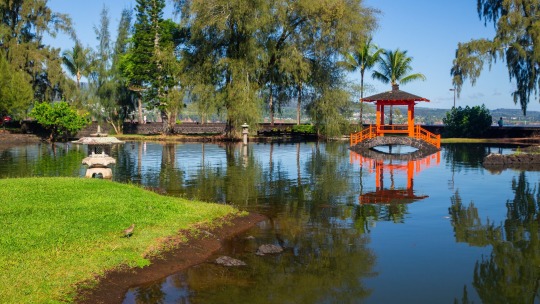

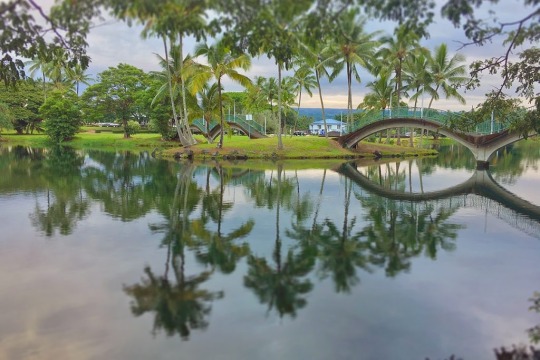

58 notes
·
View notes
Text
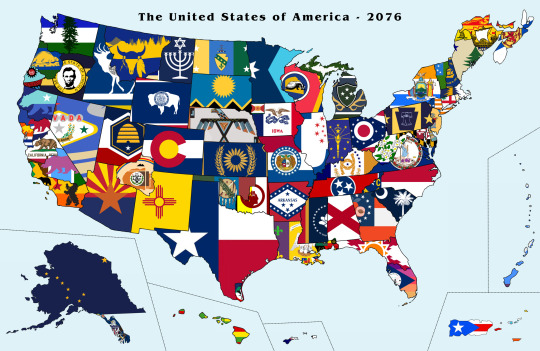

Map with flags of the United States of America circa 2076. Notable Changes:
1. DC, now officially the Douglass Commonwealth, became the 51st state along with the eastern counties of Oregon (now the state of Lincoln) who voted in the greater Idaho movement, Puerto Rico, and Mariana (a state comprising of Guam and the Northern Mariana Islands).
2. North Florida split from the rest of Florida, and now there are two Floridas, Florida-Dixie and Florida-Caribe
3. The Navajo Nation became a state
4. Upstate New York becomes a state, called North New York, as does the almost-a-state Sequoyah
5. California split into 7 Smaller States, California, Bay Area, Los Angeles, Frémont, Jefferson, Joaquina, and Southern California
6. The Virgin Islands and American Samoa (now Samoa Amelika) became states after floating city technology grew
7. 6 Planned mini City States (a la DC) get admitted. The US now has 10 Capitals to avoid bureaucratic collusion and corruption. The USA now has 10 capitals, DC (Capital of the executive branch), Vespucci (located in former parts of Iowa, congressional capital), Twainstun (located in former parts of northern Maine, judicial capital), MLK (located on Gulf Coast, where all governors meet to talk), New York (economic capital), Liliuokalani (located in former parts of Oregon, diplomatic capital), Eisenhower (located in former Alaska pan handle, military and intelligence capital), Sequoyah (Reservation version of MLK), Quintanilla (former southern tip of Texas, Space Station capital cause future), and Frémont (cultural capital, museums here)
10. Nova Scotia and New Brunswick become states following the bloody Canadian civil war, Yukon joins Alaska
11. Israel is moved to Montana in an area of land 7x the size of modern Israel, it’s initially an independent country but votes to join the USA
12. Michigan upper peninsula becomes a state after the Yooper terror attacks for self autonomy of 2069
13. Most states change their flags to be prettier
6 notes
·
View notes
Text
feminine hawaiian names

ailani [hawaiian] “chief”
akelina [hawaiian] variant of adeline, “noble”
alana [hawaiian] “awakening”
alohi [hawaiian] “bright and shining”
ani [hawaiian] “beautiful”
aolani [hawaiian] “cloudy skies”
aulelei [hawaiian] “beautiful”
auli’i [hawaiian] “cute”
halia [hawaiian] “remembrance of a loved one”
hana [hawaiian] “work”
haukea [hawaiian] “white snow”
huali [hawaiian] “bright”
inoa [hawaiian] “name chant”
iolani [hawaiian] “hawk of royalty”
kaena [hawaiian] “praised”
kaia [hawaiian] “sea”
kailani [hawaiian] “sea and sky”
kailea [hawaiian] “sea of joy”
kaimana [hawaiian] “the power of the ocean”
kala [hawaiian] “princess”
kalei [hawaiian] “flowers”
kalena [hawaiian] variant of katherine, “pure”
kalolina [hawaiian] variant of caroline, “free man”
kamala [hawaiian] “a garden”
keala [hawaiian] “the path”
kikilia [hawaiian] variant of cecelia, “blind”
kina [hawaiian] “short form”
launa [hawaiian] “to meet”
leialoha [hawaiian] “beloved child”
leilani [hawaiian] “heavenly flower”
lilikoi [hawaiian] “passion fruit”
liliuokalani [hawaiian] “smarting pain of the eyes”
lilo [hawaiian] “generous one”
lokelani [hawaiian] “heavenly rose”
mahealani [hawaiian] “full moon night”
makana [hawaiian] “gift”
makena’lei [hawaiian] “flower of heaven”
malia [hawaiian] variant of mary, “bitter”
malu [hawaiian] ”peace”
naia [hawaiian] “dolphin”
noelani [hawaiian] “heavenly mist”
palila [hawaiian] “a bird”
pele [hawaiian] hawaiian goddess of fire
ulanni [hawaiian] “heavenly beauty”
yolani [hawaiian] “hawk of royalty”
#aesthetic#authors#booklr#girl names#character names#baby names#names#name list#name ideas#name suggestions
4 notes
·
View notes
Text
NEVER FORGET
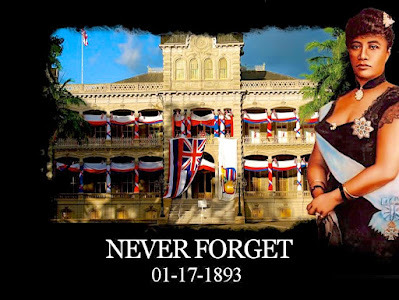
2 notes
·
View notes
Text
I will be adding this to the sotb page eventually when it's ready for proper viewing again (it's kind of in uhhhh construction mode) but here are the books that I've shortlisted in my research for Swallows on the Beam.
THIS IS NOT A COMPLETE LIST. I will continue adding to this list as I find titles I know I've read before. These are just the books that I personally own. And as a side note I am only including George Kerr's Okinawa because it's one of the only histories of Okinawa in English, it's NOT good and the guy wrote it in 1958 so his perspective on Okinawans, Chinese, and Japanese people is EXTREMELY skewed by the Second World War being so recent in his memory.
(ID: Eight photos of books. The first photo is a stack of six books on a table. From bottom to top, the books are The Ryukyu Kingdom: Cornerstone of East Asia by Mamoru Akamine, The Secret History of the Mongol Queens by Jack Weatherford, Cults Inside Out by Rick Alan Ross, Okinawa: The History of an Island People by George Kerr, Our Land Was a Forest by Kayano Shigeru, and The Great Game: The Struggle for Empire in Central Asia by Peter Hopkirk. The other seven photos are photographs of covers of books on a Kindle screen. Those books are in order: Hokkaido: A History of Japan's Northern Isle and Its People by Ibrahim Jalal, China from Empire to Nation-State by Wang Hui, trans. by Michael Gibbs Hill, Cultish: The Language of Fanaticism by Amanda Montell, God's Chinese Son: The Taiping Heavenly Kingdom of Hong Xiuquan by Jonathan D. Spence, Hawaii's Story by Hawaii's Queen by Liliuokalani, Imperial Twilight: The Opium War and the End of China's Last Golden Age by Stephen R. Platt, and The Romance of Three Kingdoms translated by C.H. Brewitt-Taylor.)

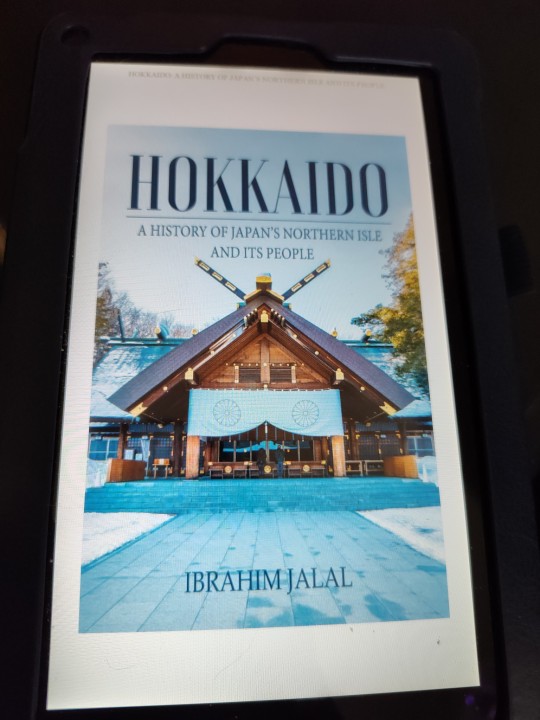



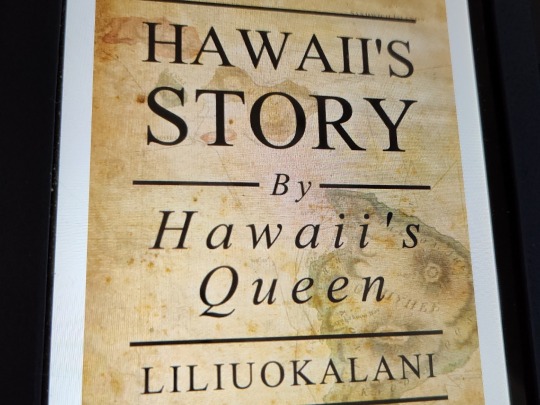

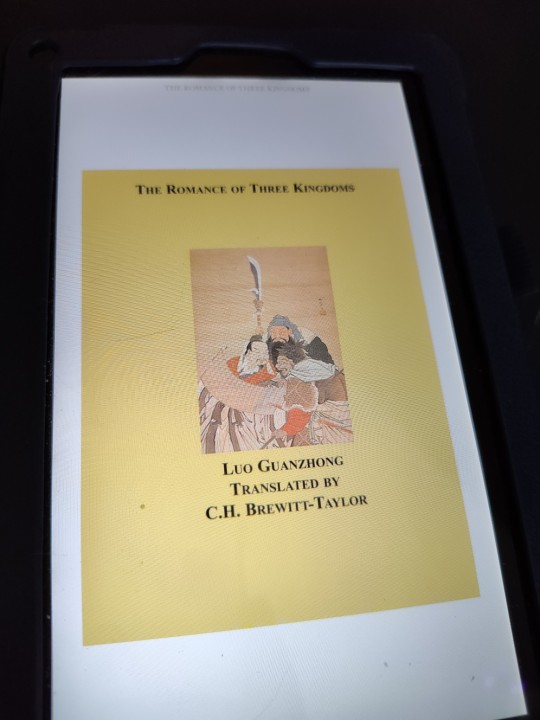
#sotb#swallows on the beam#book recommendations#alix is probably autistic and can't be bothered to get dxed
10 notes
·
View notes
Text
June 1900 Hawaii becomes a territory
Dole, Cleveland and Hawaii
On July 6, 1898 the Republic of Hawaii was annexed to the U.S. after Congress passed the Newlands Resolution, the culmination of nearly thirty years effort to bridge the two.
The Sugar Fix
Hawaii’s importance increased with the aftermath of the Civil War and the concurrent rise in sugar prices. In the United States sugar had always been supplied by the southern…

View On WordPress
#Great American Eclipse#Hawaii Annexation#June Event#Queen Liliuokalani#Reciporcity Treaty Of 1876#Sanford Dole#Search For Sugar
0 notes
Text

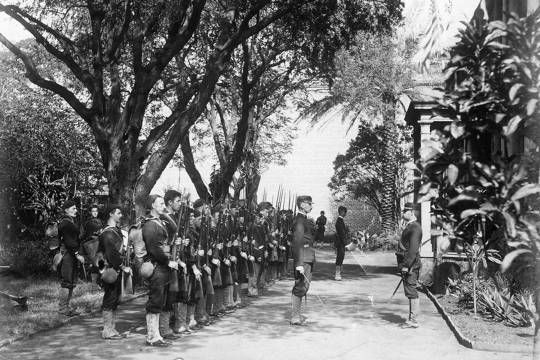
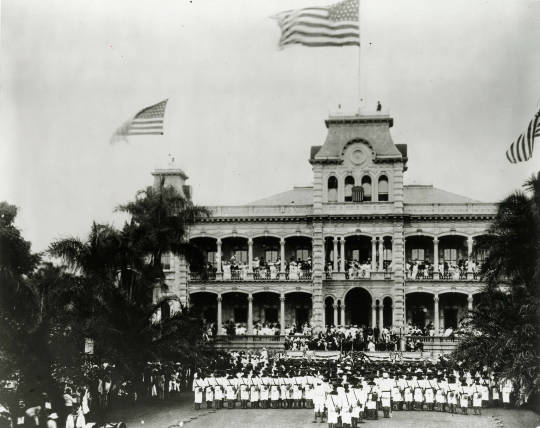
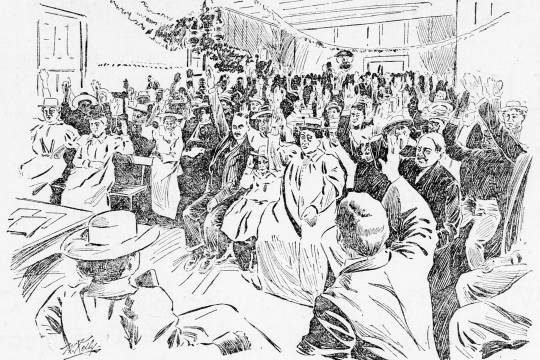


On the day celebrating the American colonies’ separation from Great Britain, Hawaii is relatively quiet in contrast to the continental United States, where fireworks light up neighborhoods across the country.
In Hawaii, July 4 is not a joyous occasion for some residents. This is because July 4 is also the day a group of businessmen self-declared the Islands to be the Republic of Hawaii in 1894, before imprisoning Queen Liliuokalani. Later, July 4, 1960, was chosen as the day the 50th star was added to the U.S. flag. [...]
Since the overthrow of the Hawaiian Kingdom in 1893, Hawaiian entities, like the Nation of Hawaii, continue to fight to restore control of Hawaii. Hawaiians do not all agree on the current status of the nation, the process of how it should be restored or whether it should be at all. [...]
In 1993, Congress admitted its wrongdoing in the Apology Resolution. Signed by President Bill Clinton in 1993, the 100th anniversary of the overthrow, it proclaimed that the Hawaiian government never relinquished its sovereignty and the Hawaiian Kingdom was illegally overthrown. [...]
When President William McKinley proposed a treaty for the annexation of Hawaii in 1897, more than half of the Native Hawaiians living in the Islands opposed it. They signed petitions that were delivered to the U.S. Congress. The treaty failed to get the two-thirds support it needed in the Senate, and so it was defeated.
In its place, the Newlands Resolution, a joint resolution by the U.S. Congress to annex Hawaii, was passed and signed into law on July 7, 1898. Dole became the governor of the Territory of Hawaii.
“The problem is that it’s not a treaty; that’s an American law,” [Keanu Sai, a University of Hawaii faculty member and political scientist who specializes in Hawaiian constitutionalism and international relations] said. “The United States could no more annex a foreign country by passing a law than it could pass the law today for the Congress to annex Canada. It has no effect beyond the borders of the United States.”
The United States is in violation of international law, Sai said. When a country that is recognized as an independent state has its government overthrown through an act of war, it does not mean the country no longer exists.
Sai says the U.S. obliterated the national consciousness of the Hawaiian people. “There’s a false narrative that was started here in the Islands in 1906 through what is called denationalization through Americanization, where my grandparents’ generation were forced to believe that they’re American and they need to speak English and all they learned was American history,” Sai said.
“When I was born and went to school, the national consciousness of the Hawaiian Kingdom was wiped clean,” Sai said. “We didn’t know anything at all.” The repetition of what was taught in schools has allowed the lie to become the truth, he said. [...]
“Prior to the arrival of the first Europeans in 1778, the Native Hawaiian people lived in a highly organized, self-sufficient, subsistent social system based on communal land tenure with a sophisticated language, culture, and religion,” [John Garcia, minister of foreign affairs and second vice president for the independently formed government Nation of Hawaii] said. “The Hawaiian Kingdom is legally a sovereign independent state like any other country. The U.S. has never annexed Hawaii and is illegally occupying Hawaii for over 129 years.”
-- From "While US celebrates its independence, Hawaiians still wait for theirs" by Christine Hitt for SFGate, 4 Jul 2023.
3 notes
·
View notes
